Deb Cohen of The Front Door Project looks at the unique benefits and challenges of living in a historic district in West Hartford.
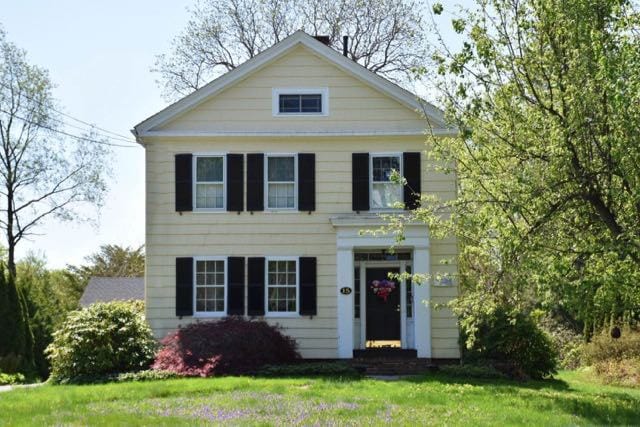
There are a wide variety of homes in the Buena Vista Historic District in West Hartford. Photo credit: Deb Cohen
By Deb Cohen
Many towns across the country have designated local historic districts within their town. But what does that mean, exactly? Most of us realize it’s a collection of old homes grouped on a single street or within a couple of blocks in a neighborhood. We assume the homeowners have to get permission to paint their house a certain color or to put on an addition. Or maybe we just think it’s a nice label to make an area seem special.
In West Hartford, we have three local historic districts and eight individually designated local historic properties. I recently captured some of the beautiful homes and buildings in the Buena Vista Historic District and thought it would be helpful to give some insight into what local historic districts are all about.
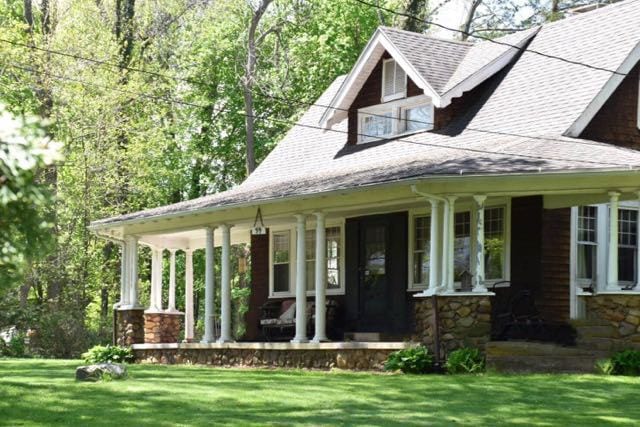
An expansive porch wraps around this unique home. Photo credit: Deb Cohen
The first thing to realize is that a local historic district is a legal designation created to identify, protect and enhance our town’s historic resources. It is the strongest tool a town has to ensure historic preservation. A local historic district is established by a town under Connecticut General Statute 7-147a-y.
I won’t bore you with every step that needs to be taken to establish a local historic district but suffice to say, it’s kind of a big deal and not an easy thing to accomplish. It takes research, organization, likely some funding and a lot of time. Most importantly, it happens because the homeowners living in the district decide by majority vote whether or not they want the designation.
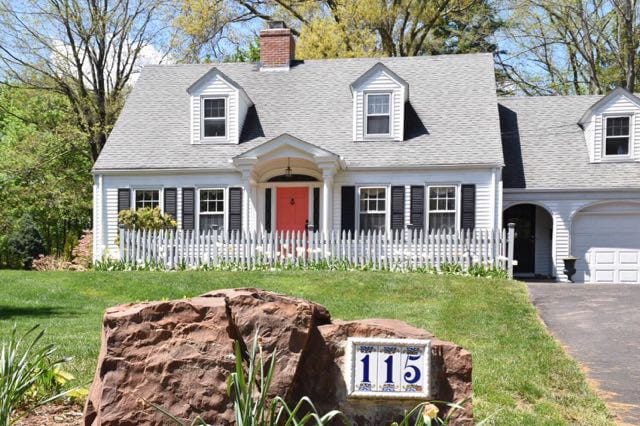
A coral door brightens this class cape. (Technically this home is adjacent to the historic district but hey … it’s pretty.) Photo credit: Deb Cohen
All local historic districts are governed by a Historic Commission, a legal body with members appointed by Town Council. Anyone may apply to become a member of the Commission (as is true of many local government committees). While relevant experience is certainly valued (think architect, historian, attorney) it isn’t a prerequisite to being appointed.
In West Hartford, there are eight Commission members, five regular members and three alternates. At least one regular member and one alternate member must own property in a local historic district. Full disclosure: I am a Commissioner on the West Hartford Historic District Commission as an alternate member.
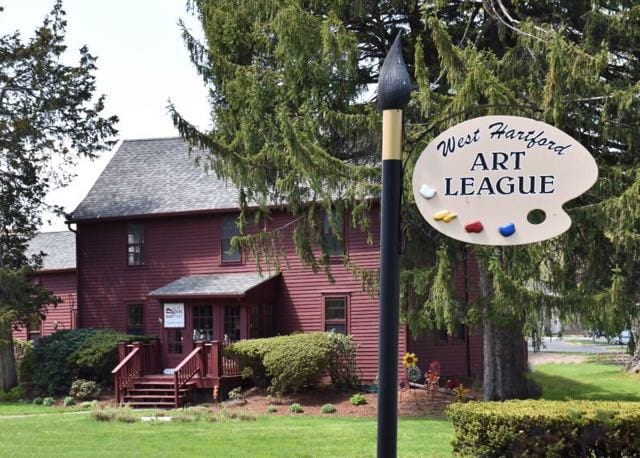
The home of the West Hartford Art League is part of the Buena Vista Historic District. This old farmhouse is currently the Saltbox Gallery. Photo credit: Deb Cohen
So what does the Historic Commission do relative to our local historic districts? The core responsibility of the Commission is to ensure that the historic character of the neighborhood is maintained and that the public view of the properties in the district is continuously maintained or improved.
As I have learned in my participation on the Commission over the last year, this process isn’t willy-nilly. The members of the Commission follow a well-established set of guidelines and a specific process based on relevant law. Decisions are made based on adherence to the guidelines, not opinion.
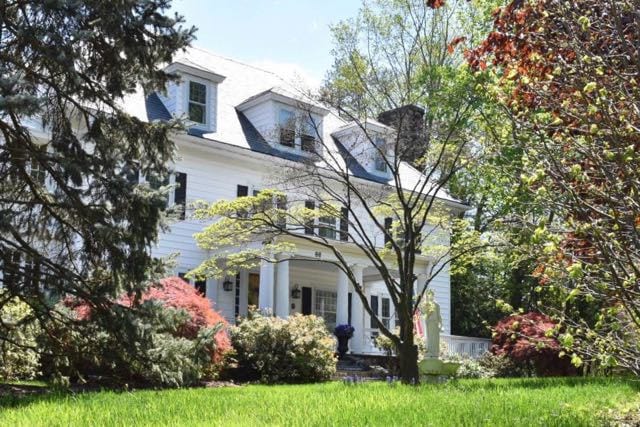
This traditional home looks stunning in every season. Photo credit: Deb Cohen
In order to make a change to the exterior of their home, property owners in the local historic district must adhere to the guidelines and rules of law as well by submitting an application called a Certificate of Appropriateness (or COA) for the Commission’s review. The COA describes the work to be done and includes drawings, materials to be used, etc. as applicable.
The COA is submitted before work is begun, and before a building permit is obtained (if applicable). Once a COA is received by the Commission, a public hearing is scheduled and properly noticed so that the public can attend if they would like. The Commission generally meets monthly so the homeowner doesn’t have to wait long for a decision.
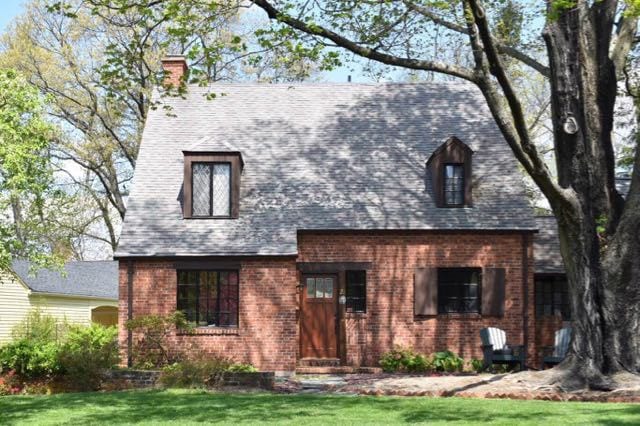
Tudor-style influences the windows and brickwork on this charming home. Photo credit: Deb Cohen
While many exterior changes do require a COA, it may come as a surprise to you that paint color does not. The Commission is primarily concerned with permanent changes to the exterior of the home, so a homeowner can do whatever they like with paint color. All landscaping and interior changes are excluded as well.
While certainly not an exhaustive list, the most common requests pertain to roofing, windows, additions, doors (including garage doors), gutters, fences and driveways. In general, to maintain the appearance of the historic district, materials used should be consistent with materials used on the home originally.
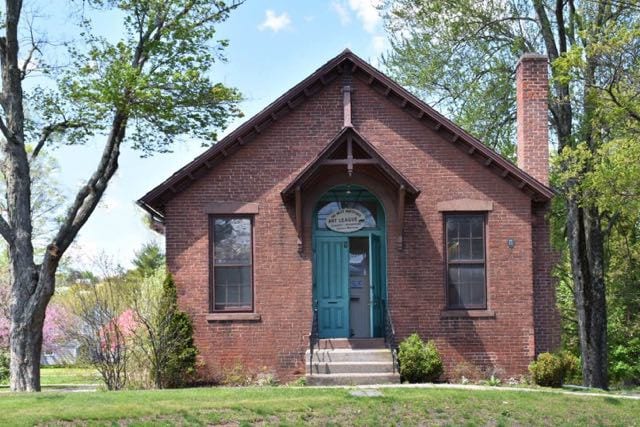
One of the first schoolhouses made of brick c. 1878. The only one remaining of seven original one-room schoolhouses in West Hartford. Photo credit: Deb Cohen
What happens if the Commission doesn’t approve a COA? A homeowner can submit a new COA with changes which will hopefully be approved, or the homeowner can appeal the decision through Superior Court.
If a homeowner completes work without a COA, or moves forward with work even though the Commission didn’t grant approval then in theory the Commission could ask that the work be corrected or that fines be assessed. Neither of these options is desirable and hopefully the homeowner and Commission can work together to resolve.
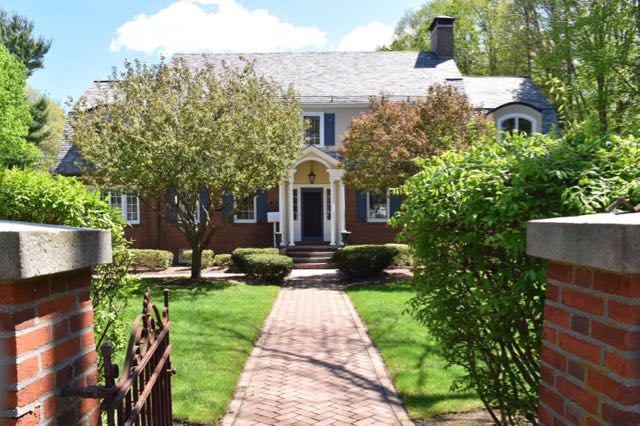
The herringbone brick path, wrought iron gate and flowering trees accent this stunning home. Photo credit: Deb Cohen
So with all this regulation why would a homeowner want to live in a local historic district? Who wants to ask permission to make changes to a property that they own? While design regulation may be in the “con” column for some, for many it’s in the “pro” column.
Design regulations ensure that the property values of the entire neighborhood remain stable, and in fact studies have shown that property values in local historic districts are higher on average than homes outside the historic district. Also, if you love the character of a historic neighborhood, living in a local historic district helps to ensure against a neighbor demolishing their home, covering wood clapboard with vinyl siding or adding a massive addition out of scale with the neighborhood.
Without protection, these types of changes deteriorate the fabric of a historic area over time until little of significance remains.
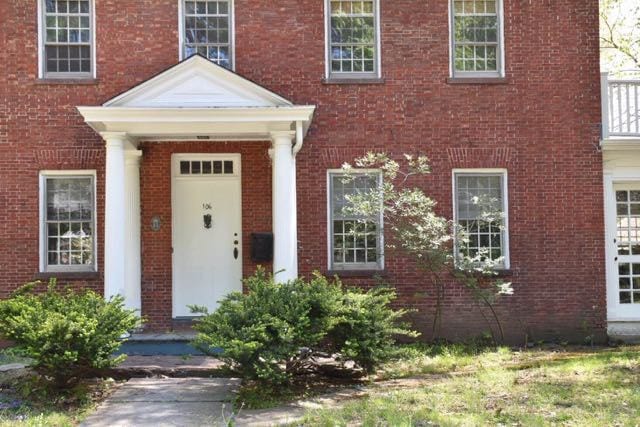
Simple and classic design of Federal style architecture. Photo credit: Deb Cohen
Homeowners can also take advantage of historic tax credits. While laws do change, current Connecticut law allows for up to a 30 percent credit on expenditures of $15,000 or more on eligible properties. If a home is in a local historic district, it is automatically on the State Register of Historic Places and therefore automatically eligible for the tax credit.
Interestingly, even though interior changes aren’t governed by the Historic Commission, a homeowner can receive a historic tax credit for both exterior and interior changes, as well as changes to a home’s mechanical systems. The application for the credit takes some time but it’s worth the effort!
For other benefits of local historic districts, check out this post from the National Trust for Historic Preservation.
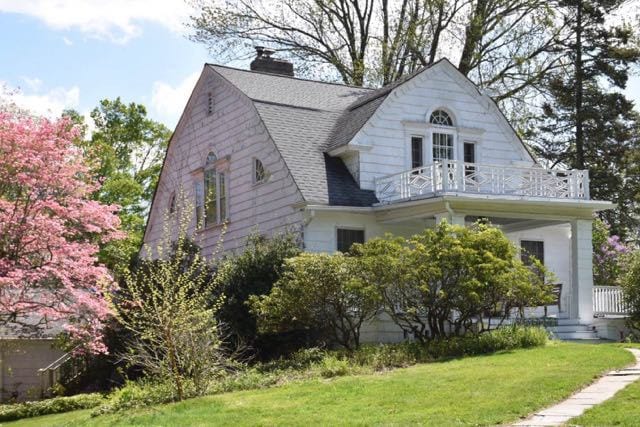
It’s all about the entryway on this home, as well as the unique windows. Photo credit: Deb Cohen
It all seems pretty straightforward, right? Well, like anything laws and adopted design guidelines don’t cover every possible scenario and at times disagreements between the Commission and property owners can occur.
Also, while local historic districts come into existence based on majority vote, there may be property owners that were in the minority but are still required to follow the guidelines. Or ownership changes hands and the new owners aren’t fully aware of their responsibilities when purchasing the home.
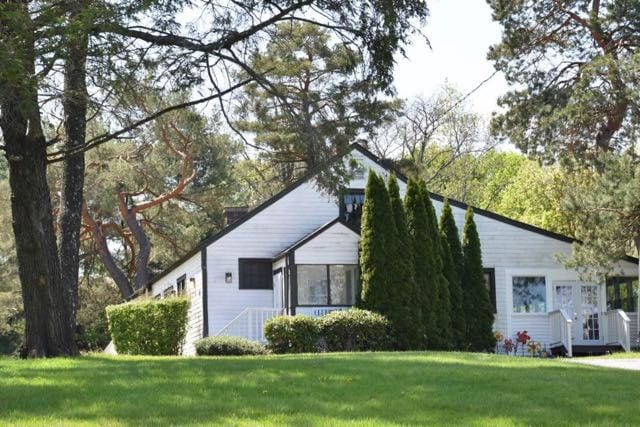
Another of the West Hartford Art League’s three buildings they have acquired use of over time. Photo credit: Deb Cohen
Creating a local historic district is something that residents and towns do for what I like to think of as the greater good. Homeowners give up some of their rights for the opportunity to live in a unique place and be stewards of historic resources that we all hope will remain for many years into the future.
In my mind, it’s not much different from moving into a district that is zoned residential vs. commercial, or purchasing a home that requires extra flood insurance. Sometimes the places we choose to live come with restrictions that we readily accept to get the other benefits that come with living in the area.
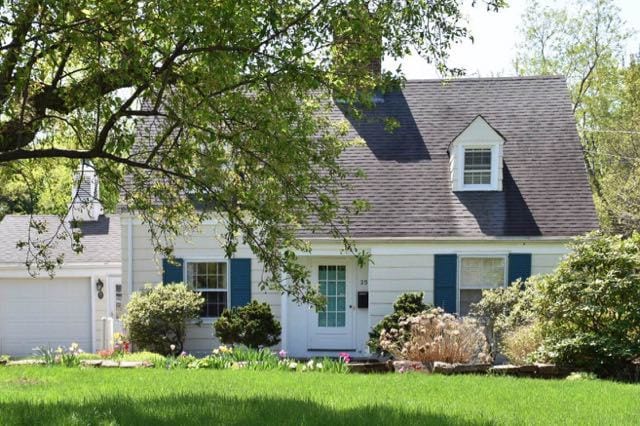
Constructed in 1940, this cape home is also part of the local historic district. Photo credit: Deb Cohen
I’m grateful to the homeowners that choose to take on living in a historic property. Although the benefits are many, homeowners take on more challenging and expensive repairs and maintenance than most of us and they do face limitations in what they can do with their property.
The next time you meet someone who lives in a local historic district, thank them! What they have chosen is a unique and important form of public service. From a Commissioner’s perspective, we are here to make their lives as easy as possible while staying true to the historic preservation guidelines established by law.
To learn more about living in West Hartford’s local historic districts, refer to the handbookavailable on the Town’s website. This blog post is general in nature and is not a replacement for original laws and guidelines.
To learn more about local historic districts in general, refer to this excellent resource published by the Connecticut Trust for Historic Preservation.
For more West Hartford historic homes, see my earlier post about the West Hill Drive Historic District.
Deb Cohen of West Hartford started The Front Door Project in the summer of 2014 as a way to motivate herself to get outside, exercise and pay more attention to her surroundings. She began photographing homes with a primary focus on the front door, which is a welcoming focal point. Social media provided the means to share the photographs and a ready audience to follow along, and her new-found interest soon led to exploring other local area towns in my free time. The “project” has led to deeper interests in architecture, local history and historic preservation and came at a time in Deb’s life when she needed some inspiration. Please join Deb as she continues to share her everyday travels and explorations of other towns and places! You can find her other posts at www.thefrontdoorproject.com.
Like what you see here? Click here to subscribe to We-Ha’s newsletter so you’ll always be in the know about what’s happening in West Hartford!







